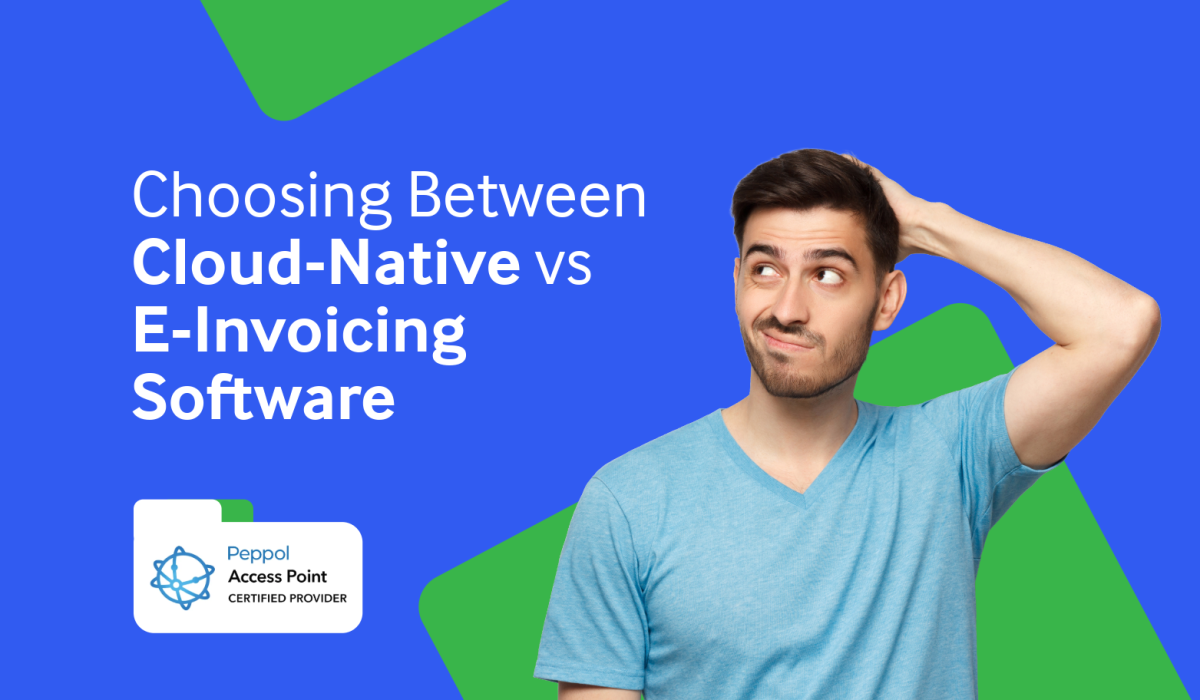As the UAE gears up for the mandatory e-invoicing rollout in 2026, businesses face a pivotal technology decision: to select a cloud-native e-invoicing system or continue with traditional e-invoicing software hosted within their own IT ecosystems. This strategic choice will profoundly influence regulatory compliance, operational efficiency, and scalability. With growing importance on adhering to the PEPPOL e-invoicing framework and integrating seamlessly with the Federal Tax Authority (FTA), deploying the right E-invoicing solution in UAE is critical for future-ready enterprises. This technical analysis examines key architectural, security, and compliance considerations to help businesses identify the best e-invoicing software in UAE aligned to their needs.
Architecture and Deployment
Cloud-native e-invoicing software in UAE operates on remote cloud infrastructure managed by trusted third-party providers. These platforms use containerized microservices and APIs to deliver flexible, scalable software that users access securely via web browsers or mobile apps. This approach ensures rapid deployment, elastic scalability, and continuous compliance updates with evolving PEPPOL e-invoicing and FTA requirements.
Alternatively, traditional e-invoicing software installed on company infrastructure provides full control over the system stack, offering extensive customization and direct hardware and security management. While this may demand more initial setup and IT resources, it remains a preferred choice for data sovereignty-conscious enterprises.
Scalability and Performance
Cloud-native platforms adapt dynamically to fluctuating invoice volumes and user loads, making them ideal for fast-growing businesses and seasonal fluctuations common in UAE markets. Features like global data center distribution and load balancing ensure consistent performance.
Legacy infrastructure-based e-invoice software generally delivers low internal latency, but scaling requires resource-intensive hardware upgrades and re-architecting.
Security and Compliance
Self-hosted e-invoicing software enables organizations to enforce granular data governance, encryption, and access policies compliant with regional laws and international standards.
Cloud solutions rely on vendor-driven security frameworks offering encryption, multi-factor authentication, and compliance certifications (ISO 27001, SOC 2). The provider’s data residency, breach response, and compliance transparency become key trust factors.
Integration and Customization
Built-in deep integration capabilities with ERP, CRM, and financial tools enable internal e-invoicing software providers to tailor deployments precisely to complex UAE business workflows.
Cloud-native solutions emphasize API-first, modular designs facilitating rapid integration with payment gateways, SaaS tools, and FTA Compliant E-invoicing Solutions aligned with Peppol network standards, enabling agile compliance.
Maintenance and Costs
Cloud platforms handle patching, upgrades, and compliance changes, minimizing demands on internal IT teams and spreading costs predictably through subscription models.
Conversely, internally deployed e-invoicing software providers necessitate ongoing investments in hardware, staff, and security administration. Though potentially cost-efficient for large companies, this can be onerous for SMEs.
Accessibility and Disaster Recovery
Cloud e-invoicing provides seamless, secure access globally and benefits from built-in disaster recovery and high availability controls critical for distributed UAE workforces.
Traditional software requires custom-built failover and secure remote access infrastructure, increasing complexity and risk.
Why UAE Businesses Should Care
The UAE’s phased 2026 e-invoicing mandate requires all VAT-registered entities to transition to certified systems compliant with PEPPOL e-invoicing standards. Selecting the right E-Invoicing solution in UAE affects compliance readiness, operational efficiency, and tax reporting accuracy.
Organizations prioritizing data control or with existing robust IT may choose internally hosted software, while those favoring agility and cost-efficiency often turn to cloud-native e-invoicing systems from trusted e-invoicing solution providers.
Conclusion
The decision between cloud-native and traditional e-invoicing software depends on an enterprise’s scale, growth ambitions, IT maturity, and regulatory complexity. Cloud-native platforms offer unmatched flexibility and simpler operations, ideal for fast-evolving UAE companies seeking the best e-invoicing software in UAE.
Businesses desiring control and tailorability may prefer self-managed solutions facilitated by knowledgeable FTA-Accredited E-Invoicing Software in UAE providers.
In all cases, careful evaluation aligned with organizational goals and compliance demands will position companies to leverage the top e-invoicing solution in UAE as digital invoicing becomes the norm across the Emirates.






